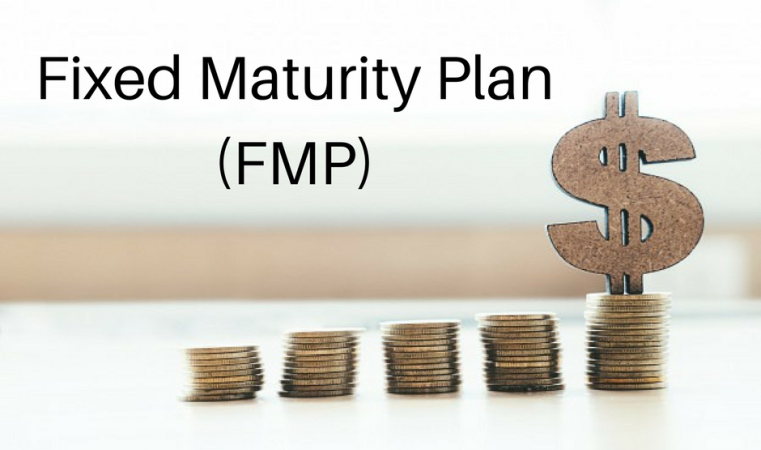A debt fund is a mutual fund scheme that invests in fixed income instruments, such as Corporate and Government Bonds, corporate debt securities, and money market instruments etc. that offer capital appreciation. Debt funds are also referred to as Income Funds or Bond Funds.

Fund | Feature | Suitability |
Liquid Funds | Low duration funds, with portfolio maturity of less than 91 days. | A good alternative to savings bank account; potential to offer higher post-tax returns. |
Ultra short-Term Bond Funds | Low duration funds, with portfolio maturity of less than a year. | Ideal for parking short-term surplus money; also offer slightly better returns than liquid funds. |
Short-Term Income Funds | Medium duration funds where portfolio maturity ranges from one year – three years. | Investors with a horizon greater than one year can benefit from these funds in a rising interest rate scenario. |
Fixed Maturity Plans (FMPs) | Passively managed close-ended funds, where investments are held to maturity. | An alternative to FDs with investment horizon of over three years. |
Long-Term Income Funds | Medium to long duration funds with portfolio maturity between three and 10 years. | Suitable for investors with a longer investment horizon. These funds benefit when interest rates fall as bond prices (NAVs) and interest rates are inversely correlated. |
Gilt Funds | Medium to long duration funds with portfolio maturity between three and 20 years and negligible credit risk, | |
Monthly income Plans (MIPs) | Medium to long duration funds normally with exposure of less than 30% to equity. | Ideal for investors who are looking for returns better than traditional debt instruments and do not want higher exposure to equities. The tilt towards debt ensures stability of income and the equity portion provides appreciation when stock markets rise. |
Capital Protection Oriented Funds (CPFs) | Follow an investment structure which seeks to protect the initial investment from capital erosion. These type of scheme offered is “oriented towards protection of capital” and “not with guaranteed returns”. The orientation towards protection of the capital originates from the portfolio structure of the scheme and not from any bank guarantee, insurance cover etc. | CPFs have a small equity component which gives risk-averse investors an opportunity to participate in the equity markets without worrying about erosion of the principal which is protected. CPFs are also rated by credit rating agencies. |
Dynamic Bond Funds | Actively managed by reducing the portfolio maturity in a rising interest rate environment and increasing portfolio maturity in a falling interest rate environment. | Ideal for investors who may find it difficult to judge the interest rate movement. These funds help investors minimize interest rate risk as they offer flexibility to alter the portfolio maturity according to the interest rate scenario. Maturity is longer when interest rates fall and shorter when interest rates rise. |
Credit Opportunity Funds | These funds purchase bonds in lower rated bonds to generate higher returns/yields. | Suitable only for investors with a profile to take higher risk as investing down the rating spectrum adds to the risk of the portfolio. |
DIFFERENT TYPES OF SCHEMES IN THE DEBT FUND CATEGORY
There are various types of schemes in the debt fund category, which are classified on the basis of the type of instruments they invest in and the tenure of the instruments in the portfolio, as explained below:

Savings bank deposits have been the retail investors’ preferred investment option to park surplus cash. Most investors regard these as the only avenue while some believe parking surplus cash elsewhere can erode their capital and does not provide liquidity. CRISIL’s recent study draws attention to a more attractive option – Liquid Fund / Money Market Mutual Funds. The analysis underlines that surplus cash invested in money market mutual funds earns high post-tax returns with a reasonable degree of safety of the principal invested and liquidity.
Liquid Funds, as the name suggests, invest predominantly in highly liquid money market instruments and debt securities very short tenure and hence provide high liquidity. They invest in very short-term instruments such as Treasury Bills (T-bills), Commercial Paper (CP), Certificates Of Deposit (CD) and Collateralized Lending & Borrowing Obligations (CBLO) that have residual maturities of up to 91 days to generate optimal returns while maintaining safety and high liquidity. Redemption requests in these funds are processed within one working (T+1) day.
They invest primarily in debt instruments of various maturities in line with the objective of the funds and any remaining funds in short-term instruments such as Money Market instruments. These funds generally invest in instruments with medium- to long-term maturities.


Short-term debt funds primarily invest in debt instruments with shorter maturity or duration. These primarily consist of debt and money market instruments and government securities. The investment horizon of these funds is longer than those of liquid funds, but shorter than those of medium-term income funds.
While income funds invest in fixed income debt instruments such as bonds, debentures and government securities, FRFs are a variant of income funds with the primary aim of minimising the volatility of investment returns that is usually associated with an income fund. FRFs invest primarily in instruments that offer floating interest rates. Floating rate securities are generally linked to the Mumbai Inter-Bank Offer Rate (MIBOR), i.e., the benchmark rate for debt instruments. The interest rate is reset periodically based on the interest rate movement. The objective of FRFs is to offer steady returns to investors in line with the prevailing market interest rates.


The word ‘Gilt’ implies Government securities. A gilt fund invests in government securities of various tenures issued by central and state governments. These funds generally do not have the risk of default, since the issuer of the instruments is the government. Gilt funds invest in Gilts which have both short-term and/or long-term maturities. Gilt funds have a high degree of interest rate risk, depending on their maturity profile. The longer the maturity profiles of the instruments, the higher the interest rate risk. (Interest rate risk implies that there is an effect on the market price of debt instruments when interest rates increase and decrease. Market prices of debt instruments rise when interest rates fall and vice-versa.)
Interval fund is a mutual fund scheme that combines the features of open-ended and closed-ended schemes, wherein the fund is open for subscription and redemption only during specified transaction periods (STPs) at pre-determined intervals. In other words, Interval funds allow redemption of Units only during STPs. Thus between two STPs they are akin to closed-ended schemes and therefore, compulsorily listed on Stock Exchanges. However, unlike typical closed-ended funds, interval funds do not have a maturity date and hence open-ended in nature. Hence, one may remain invested in an Interval Fund as long as one wishes to like any open ended schemes. Hence, in a sense, interval funds are akin to Fixed Maturity Plans (FMPs) with roll-over facility, as they allow roll over of investments from one specified period to another.

Interval funds are typically debt oriented products , but may invest in equities as well as per the scheme’s investment objective and asset allocation specified in the Scheme Information Document.
Interval funds are taxed like any other mutual fund, depending on whether the underlying portfolio is pre-dominantly invested in equities or debt securities. If the fund invests 65% or more of its corpus in debt securities, it is taxed like a non-equity fund. Likewise, if the fund invests 65% or more in equities, it is taxed like an equity fund .

Multiple yield funds (MYFs) are hybrid debt-oriented funds that invest predominantly in debt instruments and to some extent in dividend-yielding equities.
The debt instruments assist in generating returns with minimum risk and equities assist in long-term capital appreciation.MYFs invest predominantly in debt and money market instruments of short-to-medium-term residual maturities.
DBFs invest in debt securities of different maturity profiles. These funds are actively managed and the portfolio varies dynamically according to the interest rate view of the fund managers. Such funds give the fund manager the flexibility to invest in short- or longer-term instruments based on his view on the interest rate movement. DBFs follow an active portfolio duration management strategy by keeping a close watch on various domestic and global macro-economic variables and interest rate outlook.


FMPs, as the name indicates, have a pre-determined maturity date (like a term deposit) and are close-ended debt mutual fund schemes. FMPs invest in debt instruments with a specific date of maturity, lesser than or equal to the maturity date of the scheme, also enjoy the status of debt funds. After the date of maturity, the investment is redeemed at current NAV and the maturity proceeds are paid back to the investors.
The tenure of an FMP may range from as low as 30 days to 60 months. Since the maturity date and the amount are known beforehand, the fund manager can invest with reasonable confidence, in securities that have a similar maturity as that of the scheme. Thus, if the tenure of the scheme is one year then the fund manager would invest in debt securities that mature just before a year. Unlike in other open ended funds, where one can buy and sell units from the mutual funds on an ongoing basis), no pre-mature redemptions are permitted in FMPs. Hence, the units of FMPs (being close ended schemes) are compulsorily listed on a stock exchange/s so that the investors may sell the units through stock exchange route in case of urgent liquidity needs.
MIPs are hybrid schemes that invest in a combination of debt and equity securities, but are typically debt oriented mutual fund schemes, as they invest pre-dominantly in debt securities and a small portion (15-25 per cent) in equities.
MIPs offer regular income in the form of periodic (monthly, quarterly, half-yearly) dividend pay-outs. Hence MIPs are preferred option for investors seeking steady income flows. Under MIPs, monthly income or regular dividend is neither assured nor is it mandatory for mutual funds to pay at stated intervals, because in a mutual fund scheme, the dividend is paid at the discretion of the mutual fund and is subject to availability of distributable surplus from realised gains.

Due to the equity exposure, MIP returns can be volatile and may suffer losses, making dividend pay-outs irregular – both in quantum and frequency or even skip dividend payment. In spite of this, MIPs have a history of providing higher returns after adjusting for tax and hence can be a better option.
Investors wary of fluctuating income from MIPs’ dividend option can opt for Growth Option and a systematic withdrawal plan, or SWP, which allows regular redemption of a pre-determined amount. An SWP under an MIP can work as a regular source of income for investors. SWP works better when a person invests a large sum.

As the name suggests, Capital Protection-Oriented Funds (CaPrOF) are mutual fund schemes that aim to protect at least the capital, i.e., the initial investment, providing an opportunity to make additional gains, as per the investment objectives of the fund. In short, a CaPrOF aims to safeguard the principal amount while offering a potential equity-linked capital appreciation. However, it is important to note that there is no guarantee of returns or guaranteed capital protection.
CaPrOF are closed-ended debt funds that typically invest a major portion (say 80%) of the corpus in AAA-rated bonds, and the remaining amount in riskier securities like equity. Some funds may even take exposure to equity derivatives to protect against the downside risk.
It is this very structure that is oriented towards protecting the principal. By the end of the stipulated term, the debt portion of the fund grows to give you back the principal, while the equity portion brings the potential upside. Thus, even if the equity market crashes, the principal amount is protected. Hence, CaPrOF are preferred over regular FMPs. CaPrOF are ideal for investors who wish to protect their capital against the downside risk and also participate in the equity market.
A mutual fund is a pool of money managed by a professional Fund Manager.
It is a trust that collects money from a number of investors who share a common investment objective and invests the same in equities, bonds, money market instruments and/or other securities. And the income / gains generated from this collective investment is distributed proportionately amongst the investors after deducting applicable expenses and levies, by calculating a scheme’s “Net Asset Value” or NAV. Simply put, the money pooled in by a large number of investors is what makes up a Mutual Fund.
Here’s a simple way to understand the concept of a Mutual Fund Unit.
Let’s say that there is a box of 12 chocolates costing ₹40. Four friends decide to buy the same, but they have only ₹10 each and the shopkeeper only sells by the box. So the friends then decide to pool in ₹10 each and buy the box of 12 chocolates. Now based on their contribution, they each receive 3 chocolates or 3 units, if equated with Mutual Funds.
And how do you calculate the cost of one unit? Simply divide the total amount with the total number of chocolates: 40/12 = 3.33.
So if you were to multiply the number of units (3) with the cost per unit (3.33), you get the initial investment of ₹10.
This results in each friend being a unit holder in the box of chocolates that is collectively owned by all of them, with each person being a part owner of the box
Next, let us understand what is “Net Asset Value” or NAV. Just like an equity share has a traded price, a mutual fund unit has Net Asset Value per Unit. The NAV is the combined market value of the shares, bonds and securities held by a fund on any particular day (as reduced by permitted expenses and charges). NAV per Unit represents the market value of all the Units in a mutual fund scheme on a given day, net of all expenses and liabilities plus income accrued, divided by the outstanding number of Units in the scheme.
Lorem Ipsum is simply dummy text of the printing and typesetting industry. Lorem Ipsum has been the industry’s standard dummy text ever since the 1500s, when an unknown printer took a galley of type and scrambled it to make a type specimen book. It has survived not only five centuries, but also the leap into electronic typesetting, remaining essentially unchanged.
An open-end fund is a mutual fund scheme that is available for subscription and redemption on every business throughout the year, (akin to a savings bank account, wherein one may deposit and withdraw money every day). An open ended scheme is perpetual and does not have any maturity date.
A passively managed fund, by contrast, simply follows a market index, i.e., in a passive fund , the fund manager remains inactive or passive inasmuch as, he/she does not use his/her judgement or discretion to decide as to which stocks to buy/sell/hold , but simply replicates / tracks the scheme’s benchmark index in exactly the same proportion. Examples of Index funds are an Index Fund and all Exchange Traded Funds. In a passive fund, the fund manager’s task is to simply replicate the scheme’s benchmark index i.e., generate the same returns as the index, and not to out-perform the scheme’s bench mark.
Systematic Investment Plan (SIP) is an investment route offered by Mutual Funds wherein one can invest a fixed amount in a Mutual Fund scheme at regular intervals– say once a month or once a quarter, instead of making a lump-sum investment. The installment amount could be as little as INR 500 a month and is similar to a recurring deposit. It’s convenient as you can give your bank standing instructions to debit the amount every month.
SIP has been gaining popularity among Indian MF investors, as it helps in investing in a disciplined manner without worrying about market volatility and timing the market. Systematic Investment Plans offered by Mutual Funds are easily the best way to enter the world of

Disclaimer:- Mutual fund investments are subject to market risks. Please read the scheme information and other related documents carefully before investing. Past performance is not indicative of future returns. Please consider your specific investment requirements before choosing a fund, or designing a portfolio that suits your needs. FundsPru.com is owned by Altus Wealth & Insurance Marketing Pvt. Ltd. (with ARN code 116460) makes no warranties or representations, express or implied, on products offered through the platform. It accepts no liability for any damages or losses, however caused, in connection with the use of, or on the reliance of its product or related services. Terms and conditions of the website are applicable.
© Altus Wealth & Insurance Marketing Pvt. Ltd. ( CIN. - U93000RJ2018PTC061176, IRDA Licence No. - IMF186819200320210416 ) © 2018 All rights reserved